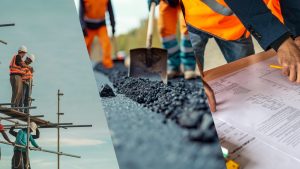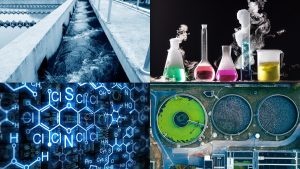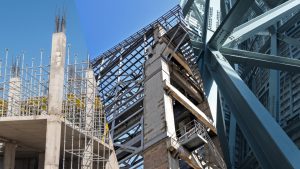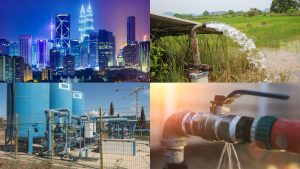Have you ever wondered why construction sites still seem hotspots for accidents despite all the safety regulations? Fearful indeed, but it is the truth. Around the world, the construction industry continues to face serious safety challenges, from falls to equipment failures and hazardous materials. But the real question is, how can we turn things around?
In this blog, we will explore practical and innovative ways to tackle safety challenges in construction, ensuring that sites become safer for everyone.
In this blog, we will explore practical and innovative ways to tackle safety challenges in construction, ensuring that sites become safer for everyone.
What are the Safety Challenges in the Construction Industry?
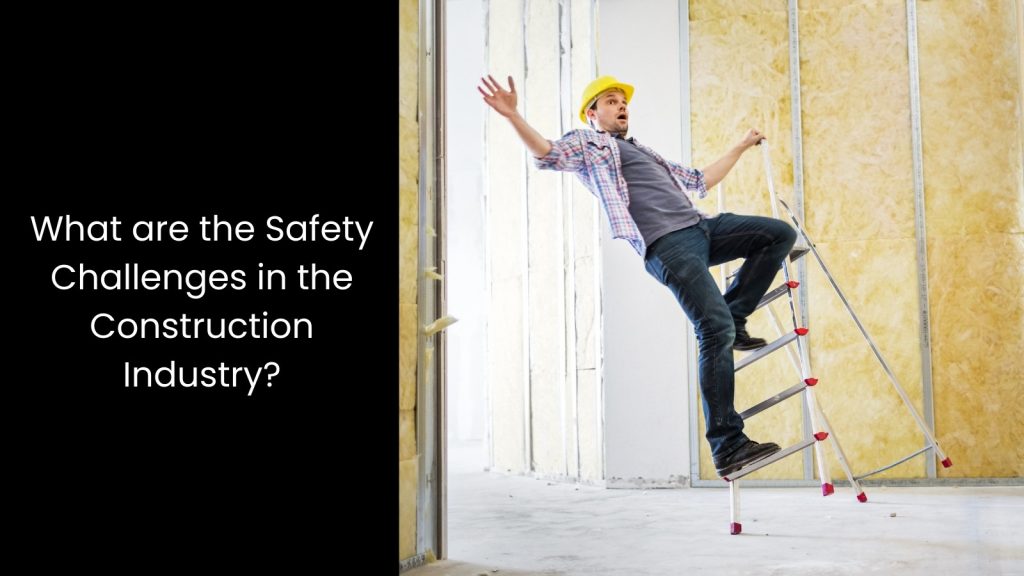
Safety challenges in the construction industry stem from various hazards, including physical risks, environmental conditions, and human error. Workers tend to face danger from equipment, falls, hazardous materials, and unpredictable weather, making safety measures a top-notch priority.
These are the most common safety challenges we can witness in the field of construction:
These are the most common safety challenges we can witness in the field of construction:
- Falls from heights remain one of the leading causes.
- Heavy machinery accidents posing risks to workers’ safety.
- Unstable ground that leading to collapses or equipment failures.
- Exposure to hazardous materials causing long-term health issues.
- Electrical hazards can result in fatal injuries.
- Confined spaces posing risks of asphyxiation or entrapment.
- Lack of proper training increases human error and accidents.
- Slips, trips, and falls are common on construction sites.
- Extreme weather can make working conditions dangerous.
- Lack of communication increases the likelihood of accidents.
Top 5 Ways to Navigate Safety Challenges in Constructions
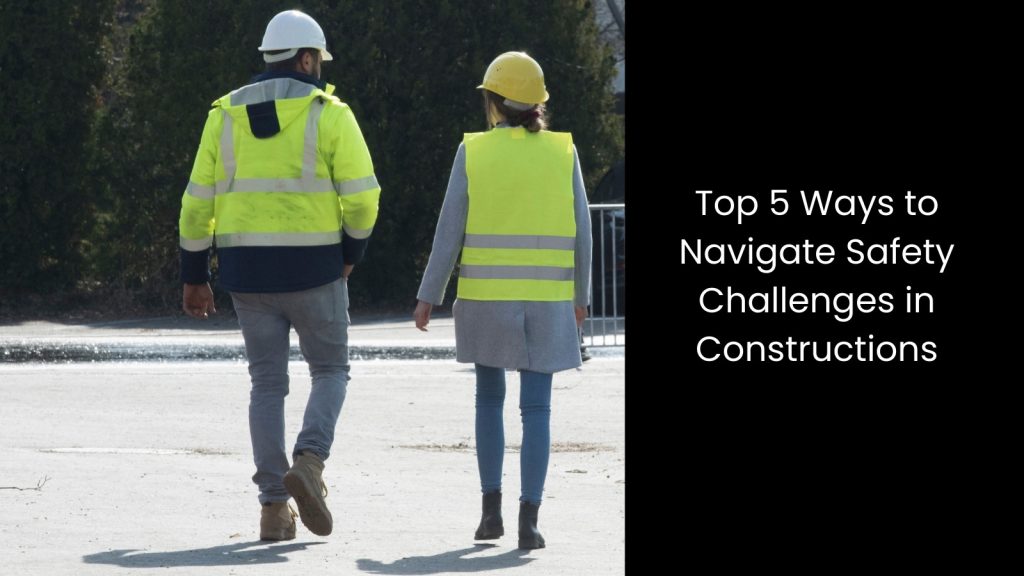
Improved Structural Integrity Assessments
This can significantly reduce safety challenges in the construction industry as it ensures that buildings and infrastructure are safe to work on and live in.
One way to achieve this is through the use of Digital Twin Technology. Digital twin models of construction sites allow for real-time simulation of building structures, enabling teams to identify potential risks and improve safety standards. This technology creates a digital replica of a physical construction site or structure, providing a dynamic model that reflects current conditions.
Construction teams can use the digital twin to track and monitor various elements such as material strength, stress points, and potential structural weaknesses. This level of insight allows engineers and safety officers to detect problems early, preventing accidents before they occur. For instance, they can spot cracks, shifts in foundations, or unsafe load distributions that might not be obvious in real time.
As construction projects progress, teams can continually update the digital twin to reflect changes in the physical structure, ensuring ongoing safety assessments throughout the project lifecycle.
This combination of constant monitoring and early detection can drastically reduce the risks that construction workers face on-site, ultimately leading to a safer working environment.
One way to achieve this is through the use of Digital Twin Technology. Digital twin models of construction sites allow for real-time simulation of building structures, enabling teams to identify potential risks and improve safety standards. This technology creates a digital replica of a physical construction site or structure, providing a dynamic model that reflects current conditions.
Construction teams can use the digital twin to track and monitor various elements such as material strength, stress points, and potential structural weaknesses. This level of insight allows engineers and safety officers to detect problems early, preventing accidents before they occur. For instance, they can spot cracks, shifts in foundations, or unsafe load distributions that might not be obvious in real time.
As construction projects progress, teams can continually update the digital twin to reflect changes in the physical structure, ensuring ongoing safety assessments throughout the project lifecycle.
This combination of constant monitoring and early detection can drastically reduce the risks that construction workers face on-site, ultimately leading to a safer working environment.
Hazardous Material Monitoring
This strategy helps detect and manage dangerous substances before they harm workers.
The construction environment usually involves exposure to harmful gases, chemicals, or dust that can lead to serious health issues such as respiratory problems or chemical burns. This is where ‘Internet of Things (IoT) sensors’ offer a practical solution to this problem.
These sensors can detect harmful substances, such as gases or chemicals, in the air, sending immediate alerts to workers and supervisors. IoT sensors are placed at key locations around construction sites to monitor air quality continuously. They track the concentration of harmful substances and trigger real-time notifications when dangerous levels are detected. This technology enables construction teams to respond quickly by evacuating workers from hazardous areas, initiating ventilation systems, and using protective equipment.
IoT sensors can also help supervisors ensure compliance with safety standards by maintaining constant surveillance of air quality, reducing the risk of exposure to dangerous materials. With IoT sensors in place, the construction industry can better manage hazardous materials and ensure the health and safety of its workers.
The construction environment usually involves exposure to harmful gases, chemicals, or dust that can lead to serious health issues such as respiratory problems or chemical burns. This is where ‘Internet of Things (IoT) sensors’ offer a practical solution to this problem.
These sensors can detect harmful substances, such as gases or chemicals, in the air, sending immediate alerts to workers and supervisors. IoT sensors are placed at key locations around construction sites to monitor air quality continuously. They track the concentration of harmful substances and trigger real-time notifications when dangerous levels are detected. This technology enables construction teams to respond quickly by evacuating workers from hazardous areas, initiating ventilation systems, and using protective equipment.
IoT sensors can also help supervisors ensure compliance with safety standards by maintaining constant surveillance of air quality, reducing the risk of exposure to dangerous materials. With IoT sensors in place, the construction industry can better manage hazardous materials and ensure the health and safety of its workers.
Accident Prediction and Prevention
Construction sites are the places where accident prediction is much needed due to the numerous risks workers face daily, such as falls, equipment malfunctions, and hazardous materials. Accident prediction and prevention can significantly reduce safety challenges using advanced technologies like Predictive Analytics and AI.
These technologies analyse historical data, such as past accidents, weather conditions, and worker behaviour, to identify patterns and predict potential hazards. In one way, Predictive Analytics uses this data to forecast where accidents are most likely to occur, while AI helps to refine these predictions by learning from new data over time.
For example, AI can process data from sensors, worker reports, and past safety incidents to predict when equipment fails or workers are at higher risk of injury. Construction teams can use these insights to take preventive actions, such as scheduling equipment maintenance before it breaks down, improving worker training in high-risk areas, or adjusting work schedules during lousy weather.
AI can also monitor workers’ actions in real time, alerting supervisors if a worker is engaging in risky behaviour or not following safety protocols. This combination of data-driven insights and real-time monitoring allows teams to address safety issues before they lead to accidents.
These technologies analyse historical data, such as past accidents, weather conditions, and worker behaviour, to identify patterns and predict potential hazards. In one way, Predictive Analytics uses this data to forecast where accidents are most likely to occur, while AI helps to refine these predictions by learning from new data over time.
For example, AI can process data from sensors, worker reports, and past safety incidents to predict when equipment fails or workers are at higher risk of injury. Construction teams can use these insights to take preventive actions, such as scheduling equipment maintenance before it breaks down, improving worker training in high-risk areas, or adjusting work schedules during lousy weather.
AI can also monitor workers’ actions in real time, alerting supervisors if a worker is engaging in risky behaviour or not following safety protocols. This combination of data-driven insights and real-time monitoring allows teams to address safety issues before they lead to accidents.
Enhanced Safety Training Programmes
Construction sites involve various hazards, from falls to equipment mishaps, and workers must be prepared to handle these risks effectively.
Virtual Reality (VR) training is one way to enhance safety programs and ensure workers gain practical experience in a controlled, safe environment. VR training allows workers to experience simulated construction site scenarios, providing hands-on learning in a secure environment. This immersive technology places workers in realistic, 3D environments where they can interact with construction tools, machinery, and hazardous situations without facing actual danger.
Workers can practice responding to emergencies, such as equipment malfunctions or unsafe conditions, without putting themselves or others at risk. VR also helps workers visualise complex construction tasks and safety protocols, allowing them to understand and retain safety procedures more effectively than through traditional training methods.
This method engages workers’ senses and improves memory retention, making it easier for them to apply what they have learned in real-world situations. As a result, VR training helps create a safer working environment by preparing workers to handle real-life challenges, reducing the likelihood of accidents and enhancing overall safety awareness on construction sites.
Virtual Reality (VR) training is one way to enhance safety programs and ensure workers gain practical experience in a controlled, safe environment. VR training allows workers to experience simulated construction site scenarios, providing hands-on learning in a secure environment. This immersive technology places workers in realistic, 3D environments where they can interact with construction tools, machinery, and hazardous situations without facing actual danger.
Workers can practice responding to emergencies, such as equipment malfunctions or unsafe conditions, without putting themselves or others at risk. VR also helps workers visualise complex construction tasks and safety protocols, allowing them to understand and retain safety procedures more effectively than through traditional training methods.
This method engages workers’ senses and improves memory retention, making it easier for them to apply what they have learned in real-world situations. As a result, VR training helps create a safer working environment by preparing workers to handle real-life challenges, reducing the likelihood of accidents and enhancing overall safety awareness on construction sites.
Site Safety Inspections
These inspections help eliminate safety challenges, as the latter allows construction teams to proactively address risks before they result in accidents.
Traditional safety inspections revolve around manual checks, which can be time-consuming and limited in scope, especially when assessing hard-to-reach areas. If constructors can occupy Drones, it will offer a solution to these challenges, improving both safety and efficiency during site assessments.
You know, Drones can be used for aerial inspections to assess hard-to-reach areas, such as tall scaffolding, rooftops, or dangerous terrain. This ability to access high or hazardous locations without putting workers at risk makes drones an invaluable tool in site safety management.
Drones have cameras and sensors that capture detailed images and data, which safety inspectors can analyse remotely. This reduces the need for workers to climb dangerous structures or use scaffolding, preventing potential accidents from falls or equipment failure. Drones can also cover large areas quickly, providing a comprehensive overview of the site in a short amount of time.
This speed allows construction teams to identify safety hazards like unstable structures, exposed wiring, or improperly stored materials before they cause harm.
Traditional safety inspections revolve around manual checks, which can be time-consuming and limited in scope, especially when assessing hard-to-reach areas. If constructors can occupy Drones, it will offer a solution to these challenges, improving both safety and efficiency during site assessments.
You know, Drones can be used for aerial inspections to assess hard-to-reach areas, such as tall scaffolding, rooftops, or dangerous terrain. This ability to access high or hazardous locations without putting workers at risk makes drones an invaluable tool in site safety management.
Drones have cameras and sensors that capture detailed images and data, which safety inspectors can analyse remotely. This reduces the need for workers to climb dangerous structures or use scaffolding, preventing potential accidents from falls or equipment failure. Drones can also cover large areas quickly, providing a comprehensive overview of the site in a short amount of time.
This speed allows construction teams to identify safety hazards like unstable structures, exposed wiring, or improperly stored materials before they cause harm.
Guaranteeing Construction Site's Safety via Modern Tech
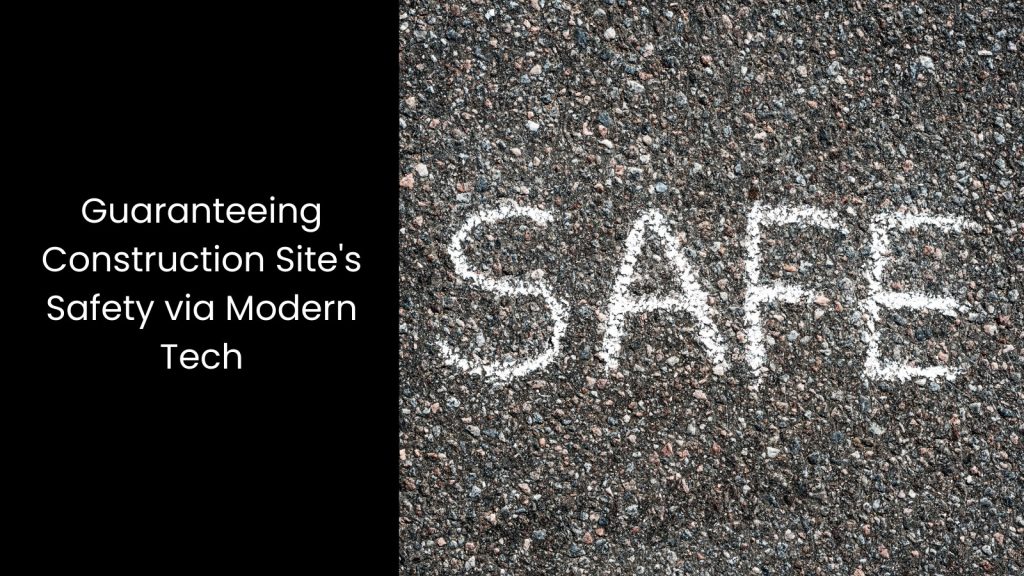
Construction sites do not have to be this dangerous if the right tech is in place. From predictive analytics, AI, Digital Twin, and IoT sensors to VR training and beyond, these tools not only reduce risks but also create a culture of safety. The future of construction is safer, and it starts with modern technology.

